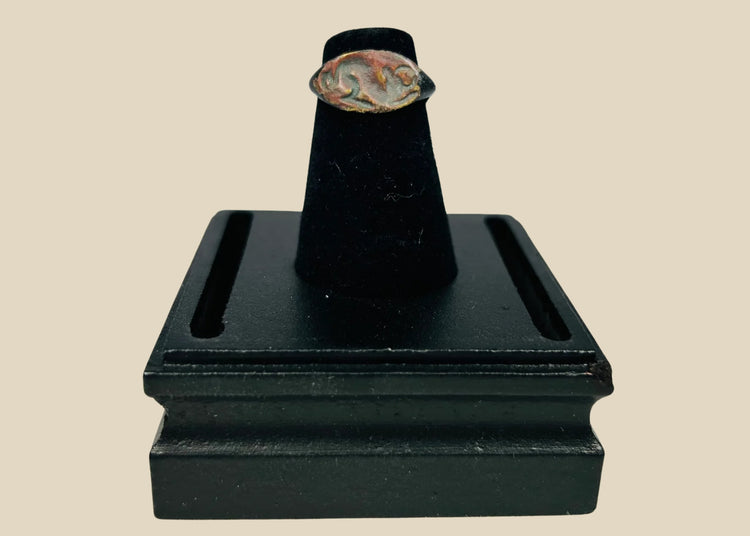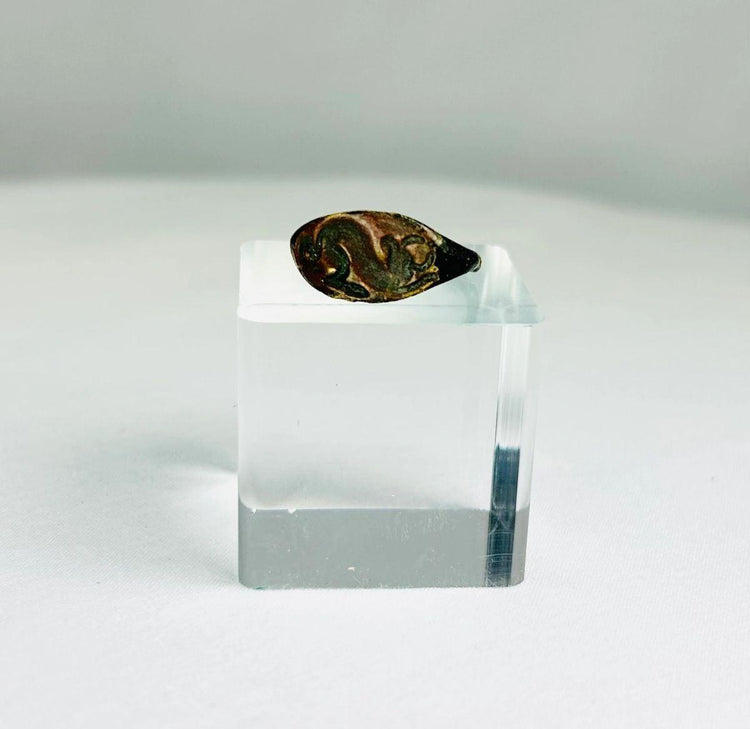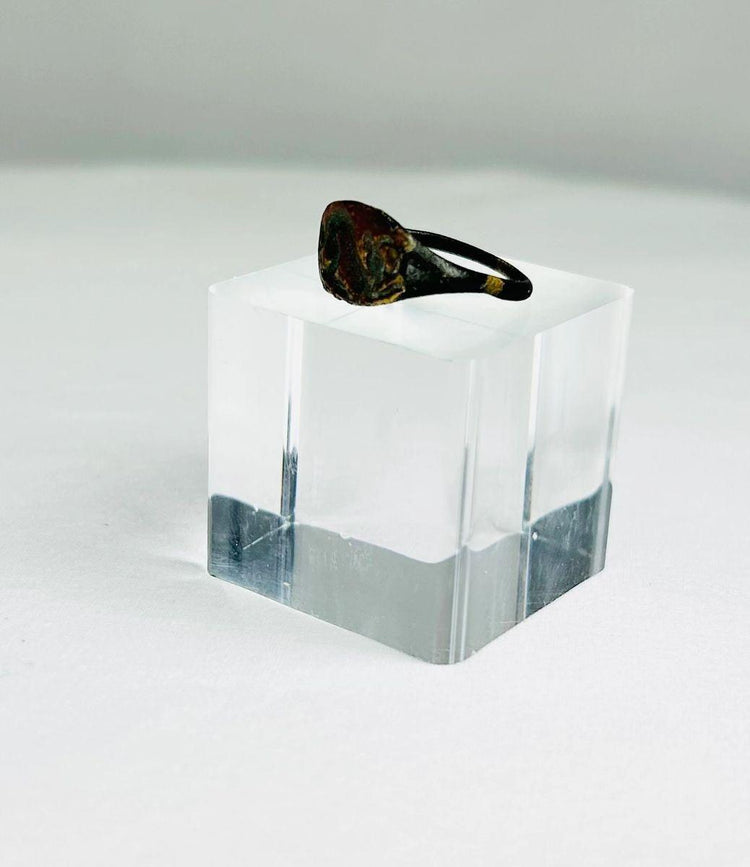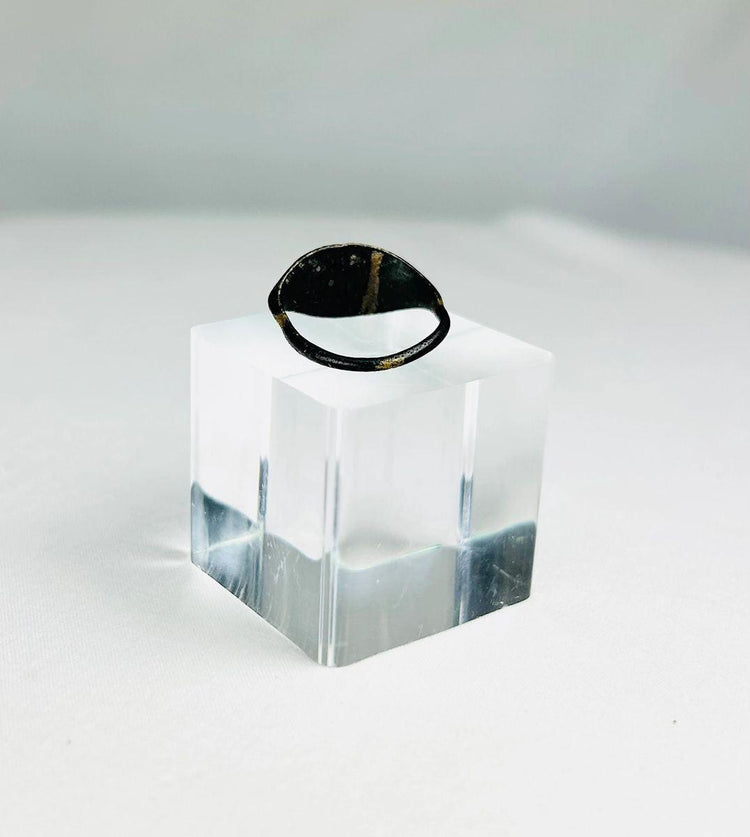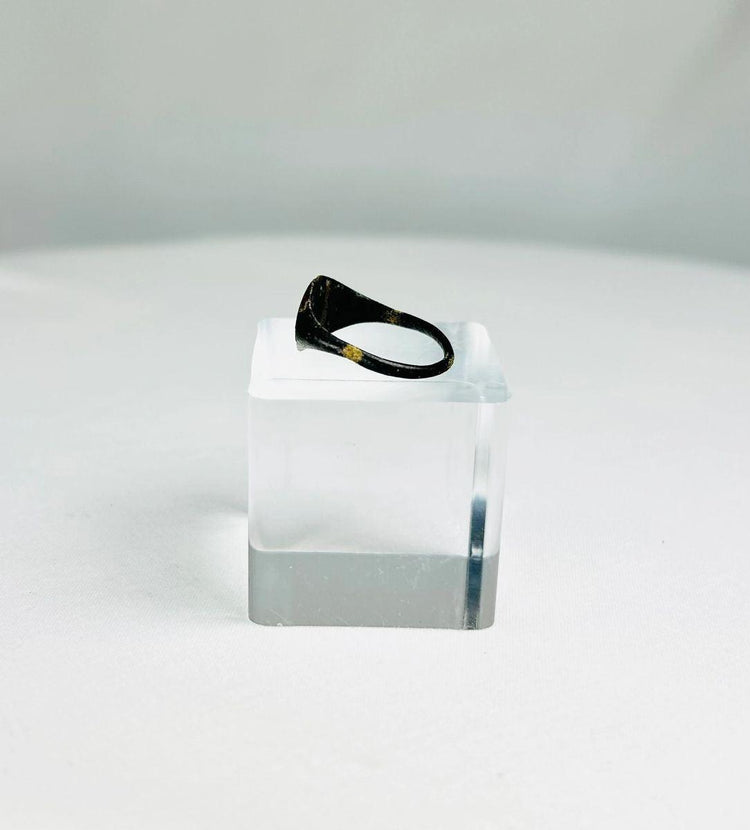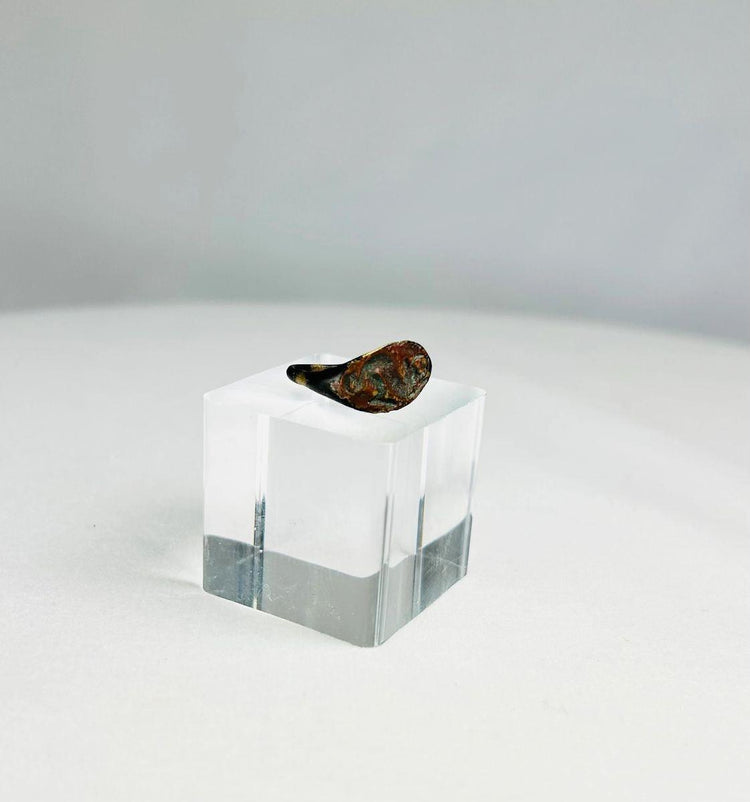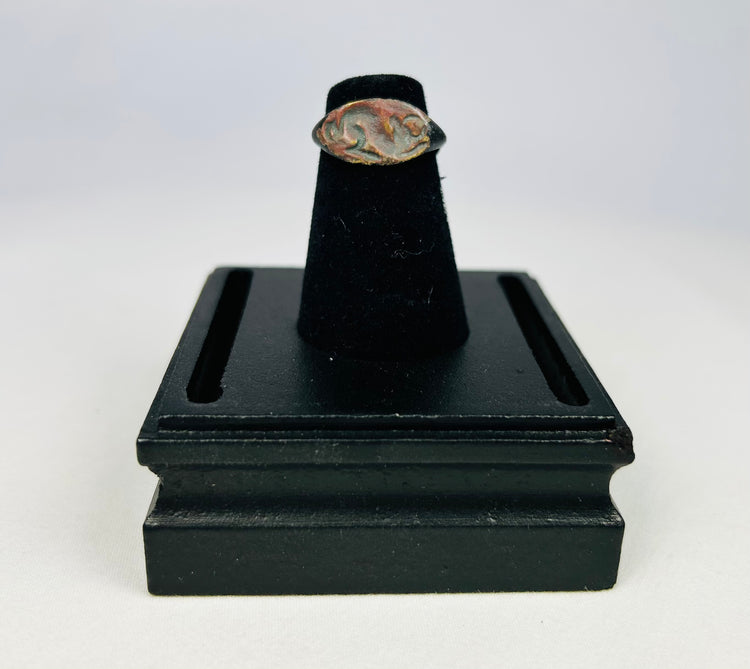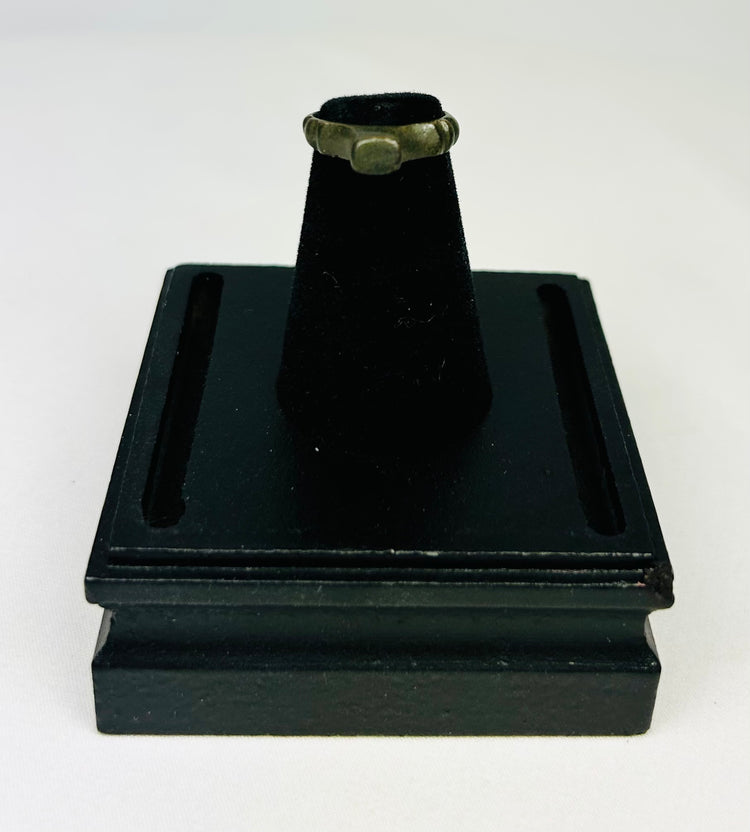Ancient Bronze Ring with Engraved Horned Animal | Circa 1st to 4th Century CE
Description
More
Less
Historical Context & Origin
Region: Mediterranean or Near East
Material: Bronze
Period: 1st–4th Century CE
Description
This ancient bronze ring features an oval bezel engraved with the image of a horned animal, likely a bull—an enduring symbol of strength, power, and fertility in antiquity. Revered across Mediterranean and Middle Eastern cultures, the bull was often linked to agricultural prosperity, divine authority, and masculine vitality. The finely incised engraving captures both the artistry and the symbolic significance of ancient jewelers.
Features
- Oval bezel engraved with a horned bull, symbolizing strength and fertility
- Finely detailed engraving emphasizing the animal’s power and presence
- Natural green patina developed over centuries, enhancing authenticity
- Worn as both adornment and symbolic expression of status and belief
Cultural Significance
In ancient Mediterranean and Middle Eastern societies, bulls were central to myth, ritual, and royal iconography. Associated with gods, kings, and fertility, the bull symbol embodied vitality and divine authority. This ring may have served not only as jewelry but also as a protective or ceremonial emblem, aligning the wearer with the strength and enduring power of the bull.
Condition
Good antique condition with surface wear and abrasions consistent with its age. The patina enriches the piece with archaeological character, highlighting its long history of use and preservation.
Dimensions (approximate)
Ring Size: 6 US
Age
1st–4th Century CE
Description
Historical Context & Origin
Region: Mediterranean or Near East
Material: Bronze
Period: 1st–4th Century CE
Description
This ancient bronze ring features an oval bezel engraved with the image of a horned animal, likely a bull—an enduring symbol of strength, power, and fertility in antiquity. Revered across Mediterranean and Middle Eastern cultures, the bull was often linked to agricultural prosperity, divine authority, and masculine vitality. The finely incised engraving captures both the artistry and the symbolic significance of ancient jewelers.
Features
- Oval bezel engraved with a horned bull, symbolizing strength and fertility
- Finely detailed engraving emphasizing the animal’s power and presence
- Natural green patina developed over centuries, enhancing authenticity
- Worn as both adornment and symbolic expression of status and belief
Cultural Significance
In ancient Mediterranean and Middle Eastern societies, bulls were central to myth, ritual, and royal iconography. Associated with gods, kings, and fertility, the bull symbol embodied vitality and divine authority. This ring may have served not only as jewelry but also as a protective or ceremonial emblem, aligning the wearer with the strength and enduring power of the bull.
Condition
Good antique condition with surface wear and abrasions consistent with its age. The patina enriches the piece with archaeological character, highlighting its long history of use and preservation.
Dimensions (approximate)
Ring Size: 6 US
Age
1st–4th Century CE
You May Also Like






















